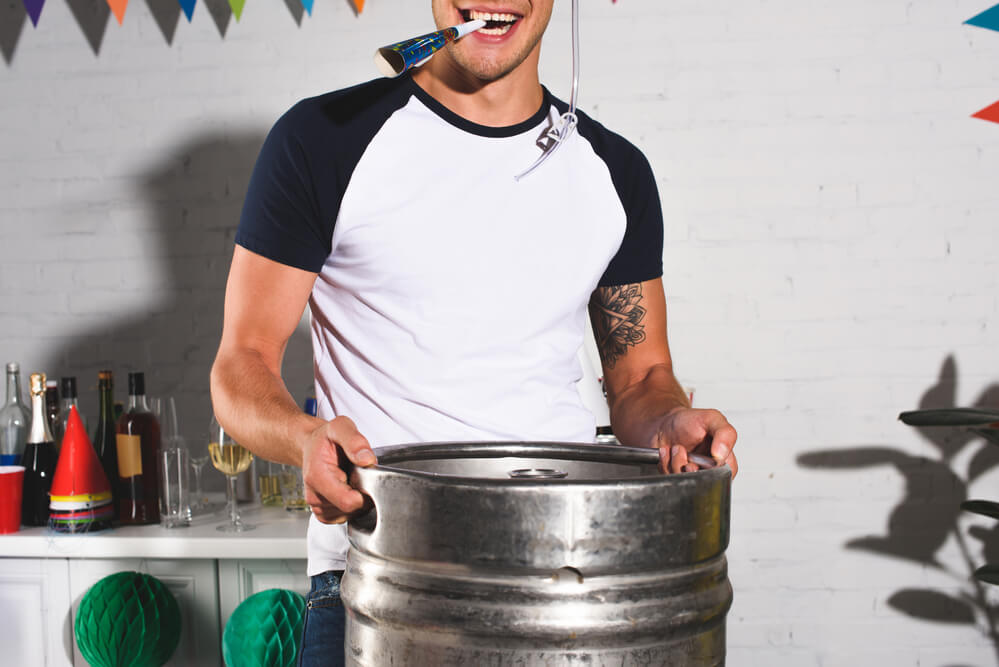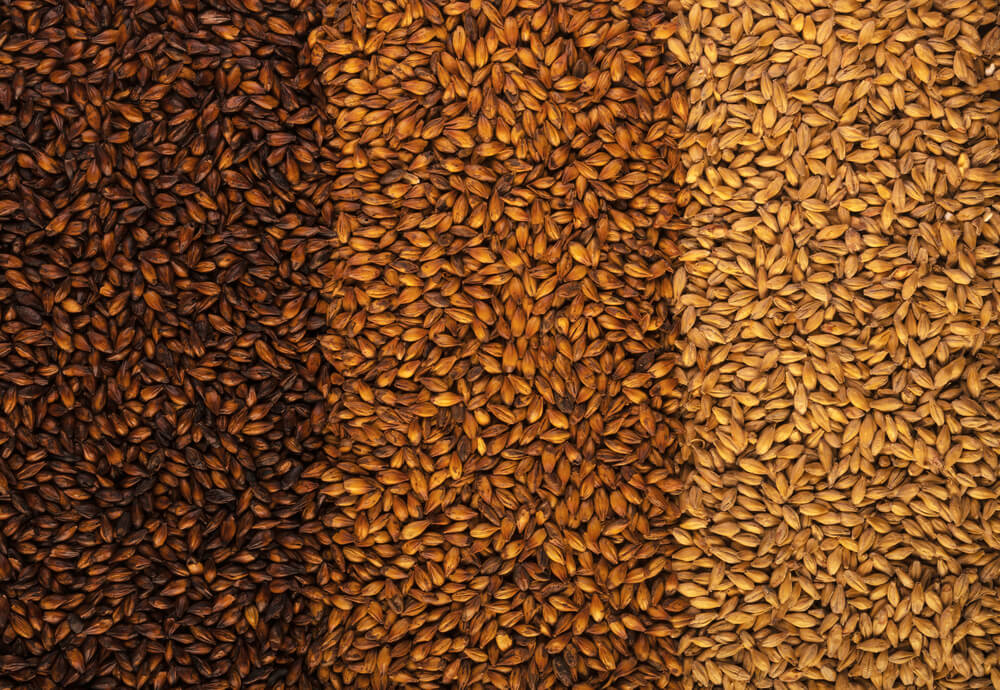In this post, we introduce you to the process required on how to keg homebrew so you can enjoy draft beer and up your keg system at home.
When we first started to homebrew, we did what many newbies do – we bottled our beer. Bottling your homebrew has some advantages, and for those new to brewing is a more affordable way to finish your beer. However, many homebrewers soon learn that bottling is time-consuming and, frankly, just a big old pain. So, we moved on to kegging our brews.
Kegging your homebrew is a great way to enjoy the fruits of your labor a lot quicker than if you bottle. It is also a much simpler process. While you build some great skills when you bottle, after doing it a few times, you realize that all you want to do is enjoy your beer with less waiting time.
The most significant advantage to kegging your homebrew is the shorter turnaround time to enjoying your beer. This option also is simpler and more straightforward. In addition, for those ecologically minded, kegging uses fewer materials, and most can be reused repeatedly.
Oh, and let’s not forget, it’s a lot easier to have more types of beer on hand with kegged beer. Want to have three or four beer styles on hand? If you bottle, this means near to a hundred bottles. When you keg, this means three or four kegs to clean and store.
These advantages are really what motivate homebrewers to keg instead of bottle.
On the flipside, kegging, while easy, does have some disadvantages. First, kegging isn’t necessarily an inexpensive option. While it requires less equipment, the equipment you need can be more costly. Another disadvantage is portability.
Kegs aren’t that easy to move around, so if you’re going to a party, you’re going to want a bottle of beer instead of that hefty keg. Sure, you can put your kegged homebrew in a growler, but that isn’t convenient and is kind of a messy process.
If you’re ready to ditch the time-consuming bottling process for your homebrew and are committed to investing in the materials needed to keg your homebrew, here is your beginner’s guide to kegging from start to finish.
Table of Contents
Materials for Kegging Homebrew
Before we jump into how to keg your beer, we want to give you a rundown of the equipment you will need to undertake this process. There is a lot of variability to this list, so we’ll give you the basics, and as you become more comfortable and experienced with the process, you can upgrade.
Kegs
Of course, this is the most important item to have if you plan to keg your homebrew. Most homebrewers use Cornelius Kegs or “Corny Kegs.” Corny kegs are ideal for homebrewing because they are easy to fill and come in a range of sizes. We typically use five-gallon kegs for homebrew. When you are shopping for Corny kegs, you will want to consider the fittings on the keg. There are two types: ball-lock and pin-lock. If you invest in multiple kegs, make sure they all have the same fittings, so you don’t have to change connectors between kegs.

It is of value to note that Corny kegs have become harder and harder to find in recent years. New ones can be pretty pricey, so if you can find secondhand Corny kegs through Craigslist or some other marketplace, you should jump on the opportunity.
Connectors
Your keg will have two connection points; one that delivers CO2 into the keg and another that delivers the beer. Select quick-disconnects that match with the fitting type on your keg. The connectors for both the gas and beer sides of your keg will be identical, so if you want to distinguish between the two easily, consider different colored connectors.
Gas
Carbon dioxide or CO2 is the gas of choice for carbonating your beer. CO2 tanks come in small 5-pound tanks or larger 20-pound tanks. If you are looking for portability, 5-pound tanks are great. However, if you’re putting your kegs in a refrigerator and you won’t be moving them around, go with the 20-pound CO2 tank. Then, when tanks are empty, you can have them refilled. Most homebrew stores can do this for you.
Regulator
The CO2 in your tank is pressurized to 800 PSI. This is a lot of pressure and way more than is necessary for carbonating your beer. So to deliver the right amount of gas to carbonate your beer, you’ll need a regulator. The regulator screws onto the tank and uses a gauge to monitor pressure and to help you set the proper PSI for carbonating your beer.
Tubing
Use food-grade tubing for both the gas and beer lines. If you didn’t buy different colored disconnects, consider different colored tubing. Many of us prefer colored tubing for the gas side and clear tubing for the beer side.
Cooler
This really isn’t necessary, but it does make your beer more enjoyable. You can use a regular cooler fitted with taps and tubing that you fill with ice, or if you want to go high-class, you can invest in the kegerator. The kegerator is very often a regular fridge that has been fitted with a set of taps. This is a pricy investment but a must if you entertain, want a better temperature controller, or just want to enjoy your kegged beer without fuss.
Tap
The tap is the faucet that allows the carbonated beer to flow from the keg to your glass.
How to Keg Homebrew in 6 Easy Steps
Now that you have your materials pulled together, it’s time to walk through the necessary steps for kegging beer. While kegging is simple, if you don’t go through all of the proper steps, your beer can go bad, or you will end up with an inadequate level of carbonation.
Step 1: Disassemble Keg
Before you can clean your homebrew keg, you need to take it apart. Start by removing the top hatch and its O-ring. Then, unscrew the fittings for beer (liquid) and gas (you may need a pair of pliers or wrench for this). Replace any O-rings that are not in good condition. Remove the dip tube. Place small parts in a tub or your sink. Your homebrew keg is now ready to be cleaned.
Step 2: Cleaning
If your used keg has beer in it, make sure to rinse out any remaining sediment from the previous beer. Then, fill the keg with lukewarm water and your preferred dish soap. At the same time, fill your sink or washtub with the keg parts with lukewarm water and soap. You really don’t need to work too hard to clean your keg at this point. Just let it sit for a few hours and rinse. If there are tough stains, use a scrubbing sponge or carboy brush to work away residuals.
Make sure you rinse the keg and all the parts well. You don’t want your beer to taste like soap.
Once your keg and parts are clean, you can reassemble your keg. Before you sanitize, you may want to check the reassembled keg for leaks by simply closing it up and attaching it to the gas.
Step 3: Sanitize
Sanitizing your keg is paramount for keeping bacteria from growing in your keg. To sanitize your keg, mix your preferred sanitizing solution – we like Star San – in the keg with cool water. Allow the sanitizer to sit for an hour or so, then pour out. If you use a sanitizing solution that requires no rinse, your new keg is now ready for beer.
Step 4: Rack Your Beer
Now it’s time to rack. “Rack” is a fancy word for the process of transferring your beer to the keg or bottle. For best results, you want to move the beer to the keg with minimal agitation. The easiest way is to use a length of tubing that extends to the bottom of the keg, attached to your fermenter spigot or racking cane. Make sure not to introduce much of the sediment at the bottom of the fermenter into your keg. This can cloud your beer or clog the keg dip tube or tubing. Once your beer has been transferred from the fermenter, install the hatch and close. Your keg is now ready for carbonation.
Step 5: Carbonate
Connect the gas line to the fitting marked “in,” and turn on the gas supply. You should hear a hissing sound that lets you know that gas is entering the keg. You will be force carbonating your beer, so using the adjustment knob on the gas regulator, set the pressure to 20 PSI. Allow the keg and gas to sit in this arrangement for a few days (2-3 is best).
After this time, check the carbonation level by shutting off the gas, releasing the pressure, and attaching the tubing for the tap to the fitting labeled “out”; this is the liquid line. When the liquid line is connected, turn the gas back on and adjust to 10 to 12 PSI for dispensing.
If your beer is still a little flat, remove the liquid line, readjust the gas pressure to 20 PSI, and let it sit a few more days. Then, repeat the process for checking the carbonation level.
Step 6: Serve and Enjoy
Once your beer is properly carbonated, make sure it is connected to the tap, find your favorite beer glass, open the tap, pour a glass of draft beer, and enjoy your delicious, kegged homebrew.


